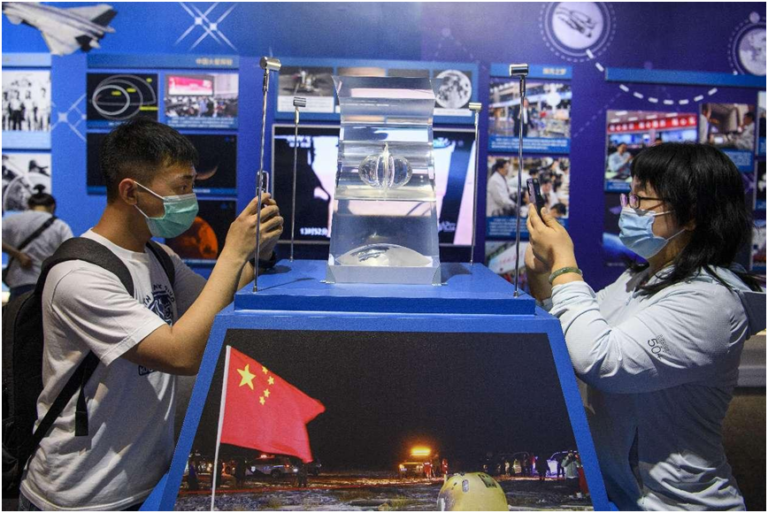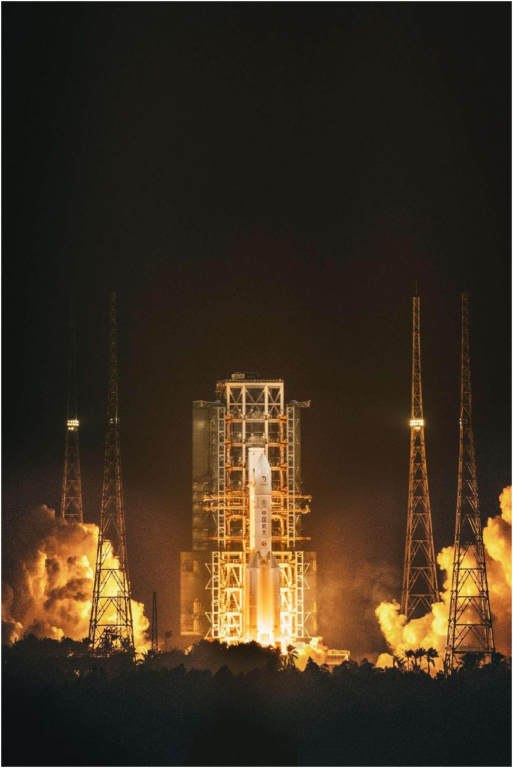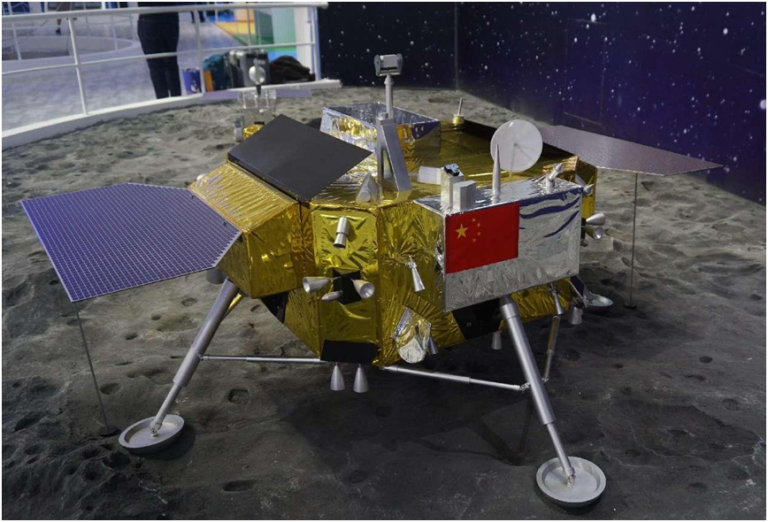
By FengHua
Building on the glorious aerospace achievements made in the recent years, China still has a number of big moves to make in space in the coming years.
The fourth phase of the country’s lunar exploration program has been approved at the end of 2021 and entered implementation stage, said WuWeiren, chief designer of China’s lunar exploration program.
The fourth phase of the program will be carried out in three steps, namely the Chang’e-6, -7, and -8 missions before 2030, according to Wu, who’s also an academician of the Chinese Academy of Engineering and a member of the Standing Committee of the National Committee of the Chinese People’s Political Consultative Conference (CPPCC), China’s top political advisory body.

The major goal of the phase-4 lunar program is to carry out scientific exploration at the lunar south pole in pursuit of building a basic structure of a lunar research station in the region, Wu introduced.
Speaking on the sidelines of the fifth session of the 13th National Committee of the CPPCC, he explained that China selects the lunar south pole as the location of the lunar research station because polar day/night phenomenon takes place in the north and south poles of the moon, just like it does on Earth. He said there may be more than 180 consecutive days of light on the moon’s south pole, which would ensure lasting scientific exploration activities.
Besides, scientists are also expecting to find traces of ice in the south pole of the moon. A special craft will fly from the landing site to a nearby crater for investigation and sampling, Wu said.
Landing in the lunar south pole would be challenging as the landing area there is only 1/10 of the size of that in the mid- and low-latitudes, Wu noted.
Chang’e-6 will attempt to retrieve samples from lunar pole regions and return them to earth, and Chang’e-7 will land on the lunar south pole to conduct scientific explorations and look for traces of ice. Chang’e-8, working in collaboration with Chang’e-7,will scout how to exploit lunar resources, carry out wide-range, full-scale and long-term observation of Earth, and verify key technologies to be applied in the construction of the lunar research station.

It is reported that Chang’e-6 and Chang’e-7 are expected to be launched around 2025.
Following Tianwen-1, China’s first mission to Mars conducted last year, the country will keep launching relevant missions such as Tianwen-2, Tianwen-3 and Tianwen-4, Wu disclosed.
Besides, the country will launch an asteroid probe during the 14th Five-Year Plan period (2021-2025) and strive to make breakthroughs in key technologies such as near-Earth asteroid sampling, Mars sample-return, and Jupiter exploration, the academician said.
According to him, China will also carry out feasibility studies on solar system margin exploration and other major projects.










